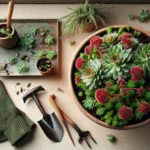Introduction to Sedum Lineare
Have you ever stumbled upon a garden that seemed to shrug off the common gardening woes, flaunting a lush carpet of greenery without a care in the world? Chances are, you were admiring a patch of Sedum lineare, a succulent that’s winning hearts with its resilient charm. This low-maintenance trooper, often known as stonecrop, is like the superhero of the succulent world—thriving where others merely survive.
In the tapestry of garden textures and colors, Sedum lineare often goes unnoticed—until you take a closer look. It’s like finding out that the quiet person at the party has the most fascinating stories. This succulent is not just about its eye-catching, needle-like leaves; it’s a tale of fortitude and versatility. From rocky crevices to urban container gardens, stonecrop stands out as a spirited groundcover that enlivens any nook with its radiant green and yellow-striped leaves. This adaptable beauty doesn’t just add a pop of color; it weaves a story of unyielding spirit into every landscape it graces.
Picture this: a scorching summer day, the sun beating down mercilessly, and there, basking in the relentless heat, is the Sedum lineare, unfazed and vivacious. It’s this very adaptability that makes stonecrop a perennial favorite among succulent enthusiasts. Imagine a plant that thrives on neglect, requiring minimal watering and no fuss—a dream come true for busy or forgetful gardeners. And when the chill of autumn whispers through the trees, this stunner simply dons its frost-resistant coat and carries on. It’s a succulent that stands as a testament to resilience, showcasing that true beauty often lies in strength and simplicity.
But don’t let its rugged nature fool you—Sedum lineare is a team player in the ecosystem, attracting a bevy of pollinators with its starry blooms. It’s not just a plant; it’s a buzzing hub of activity. In a world where every garden decision can tip the scales of biodiversity, choosing a plant like stonecrop is a silent pledge to supporting our cherished wildlife.
Whether it’s perched atop a stone wall or sprawling gracefully along a garden path, Sedum lineare is the unsung hero of green spaces. It’s a reminder that sometimes, the most profound elegance lies in the ability to endure and flourish, with minimal fanfare. It’s more than just a plant; it’s a living lesson in versatility and unassuming beauty—an inspiration for both gardeners and onlookers alike.
Origin and Botanical Profile
Dive into the botanical background of Sedum lineare, understanding its origins, taxonomy, and distinguishing features. Often referred to as “needle stonecrop” or “carpet sedum,” this resilient beauty is a member of the Crassulaceae family, which captivates gardeners with its hardy nature and minimal care requirements. Native to East Asia, this plant has spread its charm far beyond its homeland, gracing gardens and green roofs across the globe.
Sedum lineare thrives in a diverse array of environments but shows a particular fondness for rocky outcrops and arid landscapes. Its slender, linear leaves sport a vibrant green hue, oftentimes with distinctive white margins that add a dash of panache to the foliage. In the late spring to early summer, the plant bursts into a dance of yellow flowers, drawing in butterflies and hummingbirds to partake in its nectar.
What truly sets Sedum lineare apart is its adaptability. Urban gardeners celebrate this plant for its ability to withstand drought and heat, making it an exemplary candidate for rooftop gardens and eco-friendly projects. One particular initiative found in Shanghai proposes the use of this sedum to “green” flat-roofed buildings, emphasizing its potential in sustainable urban design.
While its ornamental value is evident, Sedum lineare is also praised for its ecological benefits. As a ground-covering species, it plays a pivotal role in soil erosion prevention, offering a green solution to an environmental challenge. If one were to walk through the landscapes where it grows wild, they’d witness a lush, evergreen mat of nature’s own design, reminding us of the intricate tapestry of life in which this stonecrop is but a single, yet significant, thread.
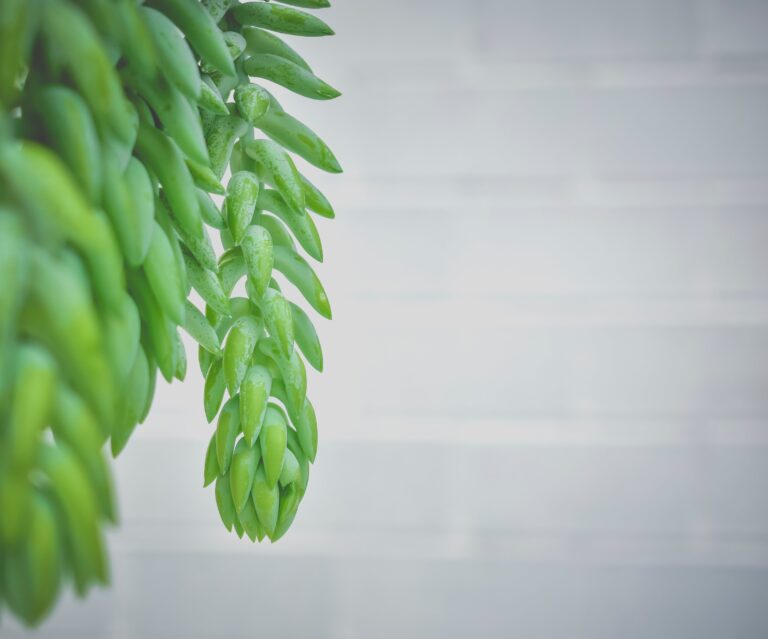
Ideal Growing Conditions
Let’s get our hands dirty and talk about what it takes to give Sedum lineare, also known as Stonecrop, the perfect home to flourish in your garden. As much as we adore the intricacy of this charming succulent, it’s not about dotting the i’s and crossing the t’s; it’s about creating an environment where it can bask in the glory of the sun and thrive.
The soil, my friends, is where it all begins. Think about it as the foundation for a house, but for your Stonecrop. It craves well-draining soil – the kind that lets rainwater hurry away like a shopper escaping a downpour. If you’re all about that organic life, consider adding some gritty matter, like perlite or sand, to achieve that ‘just-right’ texture.
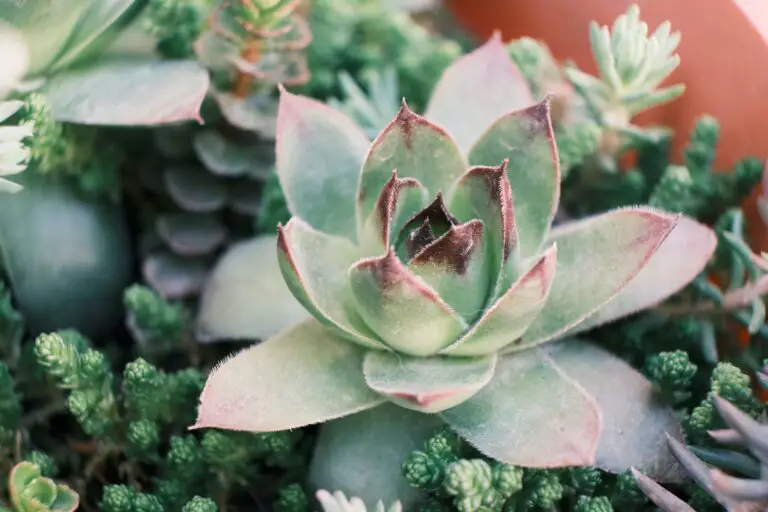
Now, let’s envision the watering ritual. Picture Stonecrop as that low-maintenance friend we all love. It’s drought-tolerant, so you don’t need to water it as often as you text your bestie. However, during its growing season, make sure it sips enough water to satiate its thirst.
And climate? Sedum lineare is not only a survivor but a bit of a sun worshipper. It prefers the comfort of temperate conditions, soaking up the rays like a sunbather at the beach. In the throws of summer, it’s practically in paradise.
If you’re yearning to know more about these resilient beauties, swing by The Spruce where they delve into the nitty-gritty of Sedum lineare care.
For more on the wonders of succulents and to extend your green knowledge further, explore this comprehensive guide on indoor succulent care; it’s a treasure trove of succulent secrets just waiting to be unearthed.
Planting and Care Guide
Embrace the beauty of Sedum lineare, also known as carpet sedum or stonecrop, with this hands-on, practical guide to planting and nurturing your succulent friend. No garden expertise needed—just a passion for greenery and a little bit of patience.
Getting Your Sedum Lineare Settled In
Think of planting Sedum lineare as if you’re welcoming a new neighbor into the community. First off, select a spot that basks in the sun like a lizard on a rock—these plants love the sunlight. A well-draining soil mix, much like a light, airy cake, is crucial to prevent soggy feet that no plant enjoys. Once you’ve nestled them into the soil, they’re ready to start thriving.
Watering Wisdom
Hold back on the aqua! Yes, you read that right—too much water is the nemesis of the steadfast Sedum lineare. Imagine giving it a sip of water only when the soil feels like a wrung-out sponge—damp but not dripping. That perfect balance encourages robust roots without drowning them.
Feeding the Stonecrop
Feeding your Sedum lineare isn’t like treating someone to a fancy dinner; it’s more like a casual, light brunch every now and then. A sprinkle of balanced, slow-release fertilizer at the start of growing season will suffice. It’s like giving a miniature high-five to your plants—subtle yet supportive.
Dealing with Pests and Problems
While Sedum lineare is a tough cookie, occasionally, it may attract pesky party crashers like aphids or mealybugs. If you encounter uninvited guests, don’t fret—simply mix up a soap solution, the plant world’s equivalent to a polite but firm ‘please leave,’ and give them a gentle nudge away.
Seasonal Smarts
As seasons change, so do the needs of your Sedum lineare. When fall whispers its chilly lullabies, it’s time to reduce watering and let your plant bask in the autumn glow. Come winter, ensure it’s not out in the cold; a little frost might be tolerable, but a deep freeze is a definite no-go.
Divide and Conquer
After a few seasons, you might notice your Sedum lineare is getting a bit cramped. That’s its way of saying ‘Give me space!’ So, gently divide the plants and spread their joy. Imagine it as setting free mini offspring into the world, ready to conquer new territories with verdant vivacity.
Design Ideas with Sedum Lineare
Sedum lineare, or Stonecrop as it’s fondly called, has a way of sprucing up any garden space with its sleek, green leaves and delicate yellow flowers. It’s not just about good looks, though; this plant brings hardiness to the table, making it a versatile pick for both seasoned gardeners and green-thumb novices alike.
Imagine a rock garden where each crevice and nook is filled with the lush greenery of Sedum lineare. These plants thrive in the cozy confines of rocks and stones, creating a harmonious blend of the rugged and the refined. The sharp edges of the rocks juxtaposed with the soft, carpet-like foliage create a visual spectacle that’s both soothing and stimulating.
But why stop at rock gardens? Sedum lineare can be just as captivating when used as a border plant. Picture a walkway lined with a soft, enchanting green edge that guides you through the landscape. It’s like nature’s carpet, welcoming visitors and complementing the surroundings with its understated charm.
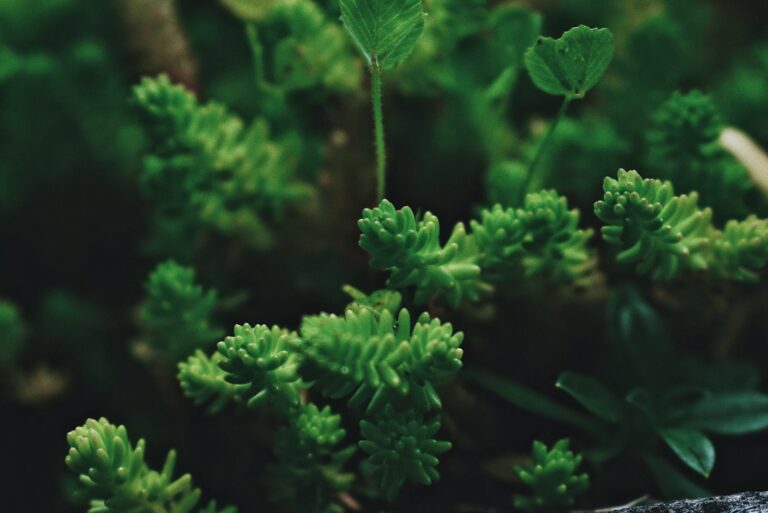
What about those struggling, empty spaces that seem almost impossible to fill? Sedum lineare comes to the rescue, filling in these blanks with ease. Due to its spreading nature, it can cover ground quickly, turning what was once bare and uninteresting into a rich tapestry of green.
Not to mention, Sedum lineare is a champion of sustainable gardening practices. Its drought-resistant nature means it requires less water, thriving even when rainfall is scarce. This quality makes it a perfect choice for an eco-friendly garden setup, where conservation of resources is as important as aesthetic appeal.
Incorporating Sedum lineare in outdoor containers can also accentuate patios or balconies. These containers can be moved around to capture just the right amount of sunlight, ensuring the Stonecrop continues to grow vibrantly. Plus, they add an instant lift to any social gathering space, creating an inviting atmosphere with their lush presence.
From soil retention to adding texture and color, Sedum lineare proves itself to be more than just a pretty face. Its functional beauty can transform a simple garden into a symphony of greenery that is as practical as it is picturesque. So go ahead, let Sedum lineare take the spotlight in your garden, and watch as it turns the mundane into the magnificent, one leaf at a time.
Propagation Techniques
Are you itching to spread the verdant joy of Sedum lineare across your green space? The Stonecrop’s resilient nature makes it a prime candidate for propagation, allowing you to clone your cherished plant time and again. Here’s the lowdown on the hustle-free methods that can transform a single Stonecrop into an ongoing cascade of succulent splendor.
Stem Cuttings: The Classic Approach
Let’s kickstart with an oldie but goodie: stem cuttings. It’s as easy as snipping a healthy piece of stem — no fancy gardening wizardry required. Just aim for a cutting about four to six inches long, ensure there are a couple of leaves on it, and cut just below a leaf node. That’s where the magic happens! Pop your fresh cuttings into a mix of potting soil and perlite, and voilà, you’ll behold roots in no time! Last summer, I watched my neighbor’s stem cuttings transform her patio into a lush Sedum spectacle; I kid you not, it was like a verdant invasion.
Leaf Propagation: A Crafty Experiment
For those who love a touch of DIY, leaf propagation is akin to playing plant scientist at home. Pluck a leaf gently from the mother plant, let it callus over for a day or so to avoid any soggy disasters, and then place it atop the soil. The leaf will soon put out tiny roots, seeking a permanent home in your garden bed. It’s a slow burn, but the anticipation is half the fun, wouldn’t you say?
Division: Sharing is Caring
Spring forward with division when your Stonecrop clump looks more like a mini-forest. Carefully tease the plant apart into smaller sections — each with its own set of roots — and transplant them wherever you spy a plant-less pocket in your garden. It’s a hands-on approach that guarantees instant gratification and a sure-fire way to bond with your garden buddies as you swap divisions.
It’s time to flex those green fingers and take a peek at how to effortlessly encourage these tricksy tendrils to take root. Feast your eyes on this enlightening clip about the wonders of propagating the tenacious Sedum lineare.
Propagation Techniques
Are you itching to spread the verdant joy of Sedum lineare across your green space? The Stonecrop’s resilient nature makes it a prime candidate for propagation, allowing you to clone your cherished plant time and again. Here’s the lowdown on the hustle-free methods that can transform a single Stonecrop into an ongoing cascade of succulent splendor.
Stem Cuttings: The Classic Approach
Let’s kickstart with an oldie but goodie: stem cuttings. It’s as easy as snipping a healthy piece of stem — no fancy gardening wizardry required. Just aim for a cutting about four to six inches long, ensure there are a couple of leaves on it, and cut just below a leaf node. That’s where the magic happens! Pop your fresh cuttings into a mix of potting soil and perlite, and voilà, you’ll behold roots in no time! Last summer, I watched my neighbor’s stem cuttings transform her patio into a lush Sedum spectacle; I kid you not, it was like a verdant invasion.
Leaf Propagation: A Crafty Experiment
For those who love a touch of DIY, leaf propagation is akin to playing plant scientist at home. Pluck a leaf gently from the mother plant, let it callus over for a day or so to avoid any soggy disasters, and then place it atop the soil. The leaf will soon put out tiny roots, seeking a permanent home in your garden bed. It’s a slow burn, but the anticipation is half the fun, wouldn’t you say?
Division: Sharing is Caring
Spring forward with division when your Stonecrop clump looks more like a mini-forest. Carefully tease the plant apart into smaller sections — each with its own set of roots — and transplant them wherever you spy a plant-less pocket in your garden. It’s a hands-on approach that guarantees instant gratification and a sure-fire way to bond with your garden buddies as you swap divisions.
It’s time to flex those green fingers and take a peek at how to effortlessly encourage these tricksy tendrils to take root. Feast your eyes on this enlightening clip about the wonders of propagating the tenacious Sedum lineare.
Pest Management and Challenges
As with all things desirable, Sedum lineare, also known as Stonecrop, faces its fair share of adversaries in the form of pests and challenges. It’s like a garden drama where our plucky protagonist must fend off the advances of dastardly critters keen on causing mischief. Let’s roll up our sleeves and dive into the strategies you’ll need to keep your Stonecrop thriving!
Imagine you’re looking through a magnifying glass at your succulent oasis when you spot aphids—that notorious gang of tiny, sap-sucking insects. They’re amassing on your precious Sedum lineare, plotting to drain it of its vigor. Fear not! Introducing ladybugs to the scene can turn the tide, casting these pests away with their ravenous appetites for aphids.
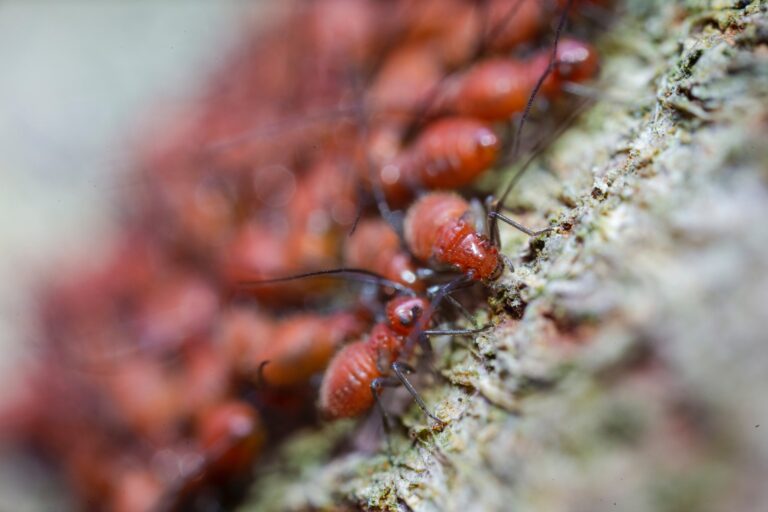
Next, consider the mealybugs; these white, cottony villains love to tuck themselves into the crevices of your Stonecrop, plotting their takeover. But they didn’t count on you wielding a spray bottle filled with soapy water or neem oil, stopping their spread in its tracks!
Then, there are the snails and slugs, the slow-moving marauders that come out at night to feast on your Sedum’s tender leaves. A sprinkle of diatomaceous earth around your plants is like laying down a barrier of spikes—a defensive moat to protect your green kingdom.
However, pests aren’t the only challenge our resilient Stonecrop faces. Overwatering and poor drainage can summon the dreaded root rot, an insidious force that lurks in the shadows of soggy soil. Prevent this sneaky destroyer by ensuring your Stonecrop’s home is well-drained and you only water when the soil is dry to the touch.
Lastly, let’s talk about climate—because even Stonecrop has its preferences. While it’s a lover of sunlight, too much intense sun can scorch its lush, green blades. On the flip side, chilling temperatures can cause frostbite to its succulent leaves. Monitoring your local weather and providing shade or frost protection at the right times can make all the difference.
With these timely tips and the courage to tackle troubles head-on, your Sedum lineare will continue to charm onlookers and foil pests’ plans, ensuring that the beauty and resilience of the Stonecrop remain at the forefront of your enchanting succulent landscape.
Beneficial Companions for Sedum Lineare
When it comes to creating a vibrant tapestry in the garden, understanding the art of plant companionship is key. Particularly for a gem like Sedum lineare, often referred to as the needle stonecrop, choosing the right partners can elevate its charm while bolstering the whole ensemble of your green space. Let’s dig into the world of companion planting and learn which neighbors make Sedum lineare truly thrive.

Imagine a sunny rockery, where the fresh, bright green hues of Sedum lineare stretch out like a lush carpet. Now, picture it neighboring Lavender plants, with their soothing aroma and spikes of purple flowers dancing in the breeze. This isn’t just visually appealing; Lavender’s strong scent is also a guard, deterring pests which might otherwise be tempted by our stonecrop friend.
Another great companion is the striking purple coneflower. These resilient beauties not only provide a stark contrast against the soft, needle-like foliage of Sedum lineare, but their deep roots also break up the soil. This allows for better water percolation, generally improving the soil condition to the benefit of less deep-rooted neighbors.
Let’s not forget the value of bright, cheerful marigolds. With a reputation for warding off a range of pests, marigolds are more than just a pretty face in the garden. Their dense, fiery blooms amongst the stonecrop can create a stunning visual effect sure to make any onlooker stop in awe.
No discussion about garden companions would be complete without mentioning the hero of pollinators: the humble herb thyme. Nestling thyme near Sedum lineare is like rolling out a welcome mat for bees and butterflies, vital for pollination and ensuring a thriving, dynamic garden.
Through strategic planting, we can not just amplify the innate charm of Sedum lineare but also foster an environment where each plant supports and enhances the growth of the other. From pest control to supporting pollinators, the right companions make all the difference in the world beneath our feet.
Frequently Asked Questions
Have you ever wondered how the quaint Sedum lineare, also known as carpet sedum or stonecrop, thrives so gracefully in gardens far and wide? Let’s dig into the grassroots of this charming plant’s care and get to the bottom of some green-fingered puzzles!

What Are the Ideal Conditions for Growing Sedum Lineare?
Imagine Sedum lineare as the sun-seeking friend in your plant circle. It craves full sun to partial shade and loves a well-drained, rockery vibe. Picture it nestled among stones, basking in the morning light, and you’ve got the perfect setting for this ground-covering star.
How Often Should I Water My Stonecrop?
Striking the right moisture balance can feel like a tightrope walk, but trust in the succulent’s hardy nature. Allow the soil to dry between watering—think of it as the plant’s preferred rhythm. Overindulgence in water, just like sugary treats, is a no-go for Sedum lineare. Moderation is key!
Why Are the Leaves on My Sedum Turning Yellow?
Yellowing leaves can be the plant’s SOS signal—usually a tell-tale sign of too much water. If your stonecrop is looking more lemony than lush, it’s time to reassess your watering habits. It’s pleading for some drought-like conditions to return to its vibrant green self.
Can Sedum Lineare Survive in Cold Weather?
True to its hardy nature, the stonecrop won’t shy away from a chilly challenge. While preferring the warmer zones, it can endure cold weather. Just think of it like a plant with a built-in puffy coat—it can handle a frosty morning walk without a shiver!
How Do I Propagate Sedum Lineare?
Feeling the urge to spread the stonecrop love? Propagation is as easy as a summer breeze. Snip a piece, let the end callous over, and tuck it into some soil. Before you know it, you’ll have new growth spreading a carpet of serene green.
What Pests Should I Look Out For?
While Sedum lineare doesn’t roll out the welcome mat for garden critters, keep an eye out for aphids or mealybugs trying to crash the party. If you spot unwanted guests, a simple soap and water spritz is usually enough to send them packing.
My Sedum Lineare Looks Leggy; What Can I Do?
When stonecrop starts to stretch out like it’s yearning for a yoga session, it might be craving more light. Relocating your plant to a sunnier spot can help it revert to its denser, more compact form. Think of it as the plant’s way of seeking a sun-soaked vacation.


